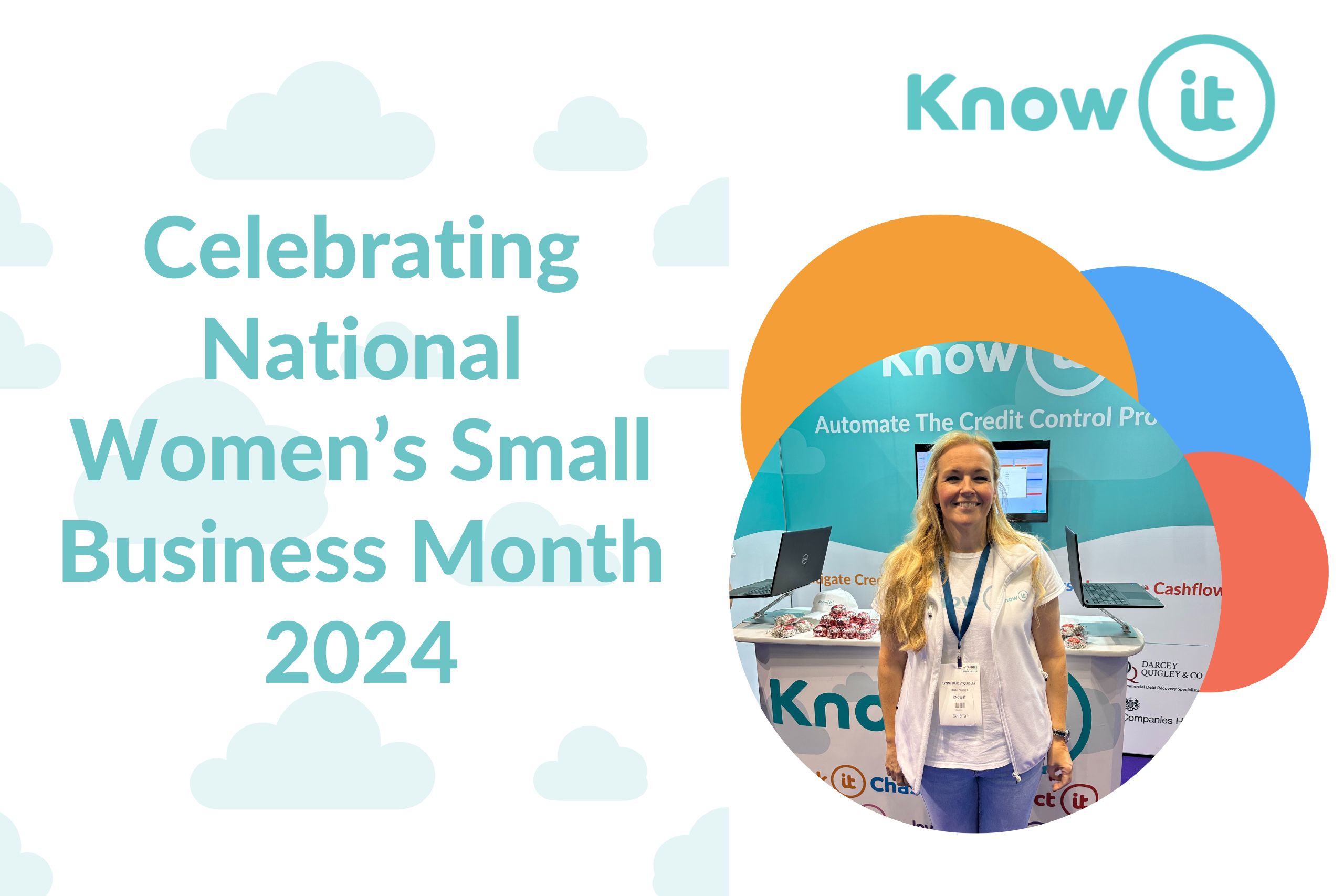The Immediate Hurdles SMEs Must Overcome For Success
Growing a business is one of the toughest endeavours any person or group can take on. And in many ways, it’s also one of the most rewarding things in life.
Operating a business is a constant slalom full of barriers and hurdles we must overcome for success, and to survive and continue trading.
There are the obvious factors that tend to be external such as the economy, the market and changes in policy.
But there are also internal barriers we must break down to give ourselves the best possible chance of success. The great thing about these innate hurdles is that they are easier to overcome with changes in our attitudes and behaviours.
In this article we’ll cover key obstacles that SMEs must overcome to thrive over the next 12 months.
Behaviour
Some of the biggest obstacles in our lives are internal, which really gives us no excuse other than to overcome them.
This is especially true in business.
Businesses that adapt stand the best chance of thriving, no matter what external forces come their way. So, to help combat the disruption external factors might have on our business, our attitudes and behaviours should be open and adaptive to changes in the way we might need to operate, so we’re able to navigate potential storms ahead.
Forming a new habit doesn’t happen overnight – it typically takes 66 days. Changing how we run our businesses through our behaviour takes time and consistency, much like growing an SME! But the rewards will be worth it ten-fold.
We’ve identified two critical areas where SMEs must change their behaviours to gain an advantage and better meet customer needs, and now expectations.
Digital adoption
According to McKinsey & Company firms who are open to technology were 2.5x more likely to experience increases in revenue of more than 20% between 2015 and 2019 compared to businesses who are closed to technology.
Still need convincing that technology can help your business?
There are other reasons, aside from boosting revenue, that SMEs should be open to technology. There are a host of tools available to us now that we can access just by using a web browser. Long-gone are the days of having to download and install programs to our computers!
These nifty apps, tools and platforms help us improve all areas of our businesses from productivity, fostering more efficient processes, better communication, deeper customer insights, sophisticated data analysis, the list is endless.
By supercharging our business with improved processes, we minimise wasted time and resources, which in turn puts our businesses in a position to be more profitable.
Whilst technology can help SMEs overcome operational hurdles, there is another barrier that may need to be broken down before we approach how to implement new technology into our businesses.
Risk
Recent research, by behavioural scientists for accountancy app Xero, revealed three mindsets small business owners have around new technology adoption:
- What I am doing is good enough, so I’d rather just stick with it
- All I can see is risk and short-term losses
- It’s too hard to compare, understand and choose between all the options
Xero found that the biggest barrier to businesses adopting technology wasn’t necessarily a lack of understanding. It was down to concerns over the complexity and costs that could arise from implementing new technology and changing existing processes.
It’s clear that the perceived risk of adopting new technologies into a business is the real barrier.
Now, we are in no way suggesting that SMEs need to take huge gambles and live on the edge. In fact, we are all about mitigating credit risk! However, without a degree of risk taking you’ll minimise potential return.
Implementing new technology to give you more intelligence to make smarter decisions, streamline processes to make your business more efficient and maximise profitability is a risk worth taking as you’re proactively ensuring your business is set up for success long-term.
But that’s not to say your business will not reap the benefits in the short-term.
A study from Booz & Company, a firm acquired by PwC, revealed businesses that had a highly aligned innovation strategy and pro-innovation culture reported a 30% improvement on the growth of an enterprise’s value compared to organisations that didn’t.
Failing to be innovative and be forward thinking will have an impact on your bottom line and implementing new technologies will place you in the best position to innovate and better serve your customers.
Fulfilling customer needs
One of the biggest hurdles SMEs need to overcome to be successful is maximising revenue and the way to do this is by delighting your customers.
The first area, if you have an existing customer base, is looking after your existing customers. The term looking after is quite broad but what we mean is over-delivering on service and quality, providing real value, staying in touch with support, offering other products / services relevant to them and delivering a personalised experience. Each individual customer should feel like they are receiving your undivided attention.
If you take care of your customers, they will come back to you. Savvy SMEs understand the needs, wants and expectations of their customers so they can cross-sell and up-sell relevant products and services, increasing life-time value (LTV) of their customers and boosting the number on the bottom line. Not to mention the fact that the cost of retaining a customer is far cheaper than acquiring one.
If you don’t have a large pool of existing customers, then you will need to attract them. We’ve already mentioned that technology will take your business to the next level, and this is especially true when it comes to marketing your business.
When we need to look something up, we Google it. We’re constantly in our emails, checking a whole host of different social media platforms and consuming content whether it’s entertainment, news, sports or education either on our phones, tablets or computers. We can even talk directly to live customer service reps through Facebook Messenger and Twitter.
Have you ever checked YouTube for a tutorial on how to do something?
The point is, we are very much a digital society that spends countless hours on our devices. Most people check their phones 58 times each day! To successfully acquire new customers, you must be where your audience’s attention is, and no matter what industry, as people we are constantly either on our phones or at a computer.
A hurdle many SMEs must overcome is digitising and having a web presence, with a website and active social media accounts. But the digital world is now evolving where it’s no longer enough just to have a presence, businesses now need to work smarter than ever to stand out in a constant sea of noise. The companies that can do this will reach a larger share of their audience and have a better shot at converting them into paying customers.
As digital adoption has increased so dramatically over the past decade customers now expect a seamless experience from brands. The checkout process when buying online should be easy and frictionless with as little steps as possible, your communications with customers need to be personal with content that is as relevant to the individual as possible whilst providing a smooth experience across all channels is vital.
Credit control
One of the single most overlooked aspects of operating a successful business is credit control. In this part of the article, we are going to be covering issues specific to the business-to-business (b2b) industry.
When you have the big idea and begin planning a business and then launching, credit management and thinking about how quick you’ll get paid by your customers isn’t at the front of your mind.
- It’s not the exciting or sexy part of running a business.
- It’s not something many business owners consider until they actually run into late or unpaid invoices.
But late payments affect many SMEs. Two-thirds of the 6 million SMEs in the UK are regularly paid late and 62% spend time weekly chasing overdue invoices.
This is a frightening stat, especially when considering the total value of outstanding payments is £61 billion, an increase of 22% since 2020.
With 50,000 SMEs failing each year due to late payments, this is a problem that must be addressed.
The good news is that we can take actions within our businesses to help minimise these harmful risks late payments pose.
Avoiding late payments through better processes
Effective credit control can only be implemented if stringent processes are followed.
A sound credit management process will begin with a company credit check. This will allow you to get to know your customer, how likely they are to default on a payment and ultimately how much of a risk they would be to your business if you granted them credit.
Company credit checks are available to purchase online by various credit reference agencies and brokers. However, Check-it goes a step further. Bringing in credit and company data from multiple sources into one report you will have a complete view of your customer including credit score, credit limit, payment behaviour, financial reports, notices from The Gazette, company information from Companies House and Unsecured Creditor Claims.
What are Unsecured Creditor Claims?
Check-it allows you to identify losses suffered by your customers because of them not being paid by their customers due to administration and insolvency. This priceless intelligence isn’t available on standard credit reports and gives you an extra layer of data to make more informed credit decisions, helping mitigate credit risk. Accurate and reliable intelligence is an asset that will be valuable to businesses for decades to come, and we are only scratching the surface as we tap into the capabilities and use-cases.
Chasing payment behaviour & habits
Whilst you will minimise risk by making data-driven credit decisions, unfortunately it doesn’t guarantee that you will get paid on time.
We can’t stress the importance of having a procedure in place for sending payment reminders and chasing overdue invoices, given the colossal impact late payments have on SMEs.
It’s genuinely shocking how little businesses are pro-active with chasing late payments, with one in six SMEs following up with less than a quarter of late customer payments and over seven in ten willing to waive 10% of annual revenue to avoid discussing late payments with their customers.
These SMEs must change their behaviour when it comes to chasing late payments.
As a rule of thumb, you should be sending a friendly payment reminder on the day payment is due, if you haven’t received it already.
As a minimum you should have 3 payment chasers and a final demand locked in and ready to send when needed. These chasers will be sent in a sequence with your 1st chaser being sent as soon as your invoice is overdue. The 2nd chaser will be sent after 7 days, your 3rd chaser when your invoice is overdue by 30 days and a final demand should be sent in the most extreme cases.
Writing and sending these reminders and then keeping track of payments can be a messy affair. Chase-it automates the complete payment chasing process! Automatically send payment reminders and chasers when specific invoices are due.
Chase-it uses data from your accountancy package to automatically chase invoices when they become late using your own personalised emails, letters and SMS. These communications will dynamically pull invoice amounts and reference numbers automatically so your customers will know exactly which invoices you are chasing.
Summary
There you have it, some of the barriers SMEs need to overcome for the best shot at success!
It might be surprising that a lot of the hurdles we’ve identified are in fact internal and to do with attitudes and behaviours.
Businesses that have the right behaviour towards tech adoption, risk, meeting more sophisticated customer expectations and credit control will cover enough bases to:
- Stay ahead of competitors
- Delight their existing customers
- Attract new customers
- Get paid on time
Invoices and shipments mean nothing if you are not being paid for them. Make sure you do get paid on time with Know-it! Get the full platform free for 30 days here.
Lynne is the Founder and CEO of Know-it!
She is a passionate, driven and forward-thinking entrepreneur determined to help resolve the late payment crisis gripping SMEs.
Having worked within the credit management industry for over 27 years and ran UK leading commercial debt recovery specialists Darcey Quigley & Co for over 16 years, Know-it was devleoped to make credit control more accessilble for SMEs to help them effectively mitigate credit risk, reduce debtor days and boost cashflow!
Connect with me on LinkedIn!



































